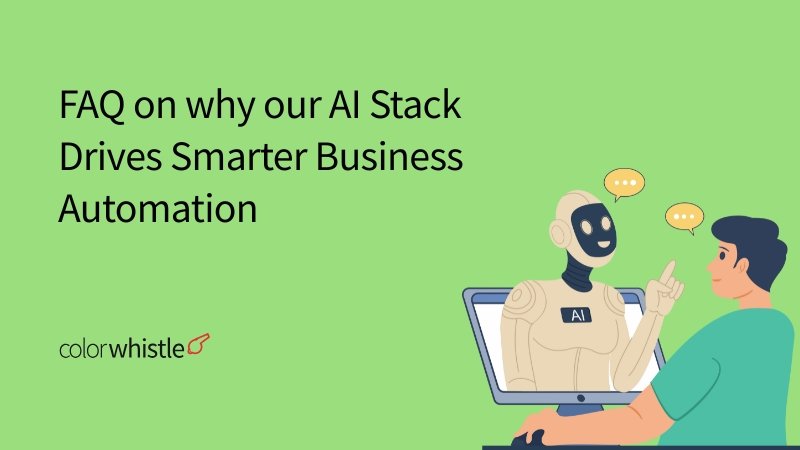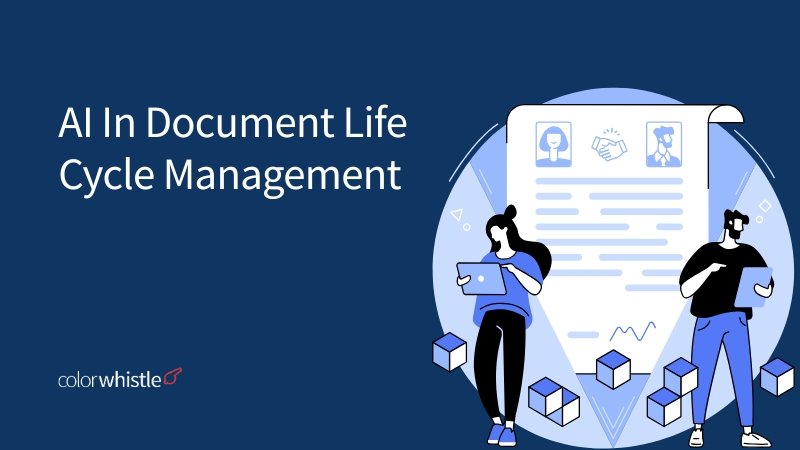Real estate Customer Relationship Management (CRM) systems are evolving from traditional tools into powerful insight engines. This transformation is driven by the integration of AI-ready data, allowing for enhanced decision-making and improved customer experiences.
Why It Matters
In today’s competitive real estate market, the ability to leverage AI and advanced analytics within CRMs can provide a significant edge. Real estate professionals can gain:
Improved data accuracy
Enhanced predictive capabilities
Increased operational efficiency
By turning Real Estate CRMs into insight engines, firms can better interpret vast amounts of transactional and interaction data. This leads to actionable insights that streamline processes and elevate client satisfaction.
Key Takeaway
Transforming Real Estate CRMs through AI-ready data is not merely an upgrade; it’s a strategic shift. This evolution empowers agents and managers with timely, relevant information, ultimately enriching customer interactions and driving business success.
Turning your CRM system into an intelligent insight engine is the future of real estate management. Embrace AI-ready data to unlock unparalleled operational efficiencies and create exceptional client experiences.
1. Understanding the Role of AI in Real Estate CRMs
AI in Real Estate CRMs is rapidly redefining how real estate businesses operate, shifting traditional systems from passive data repositories to intelligent, proactive tools. The integration of artificial intelligence enables these platforms to not only capture and store client information but also generate actionable insights that drive smarter business decisions.
Core Benefits of AI Integration
1. Improved Data Accuracy
Manual data entry and fragmented information often lead to inconsistencies within CRM systems. By incorporating AI-powered validation and cleansing routines, real estate CRMs can automatically identify and correct errors, deduplicate records, and enrich missing fields with contextual data. This ensures a reliable foundation for all subsequent analytics and decision-making.
2. Enhanced Predictive Capabilities
Predicting buyer behavior, market fluctuations, or optimal listing prices has traditionally hinged on intuition or retrospective analysis. AI-driven CRMs leverage historical transaction data, interaction patterns, and market signals to forecast outcomes with high precision,unlocking the ability to anticipate client needs or spot emerging opportunities before competitors do.
3. Increased Operational Efficiency Through Automation
Routine tasks such as lead scoring, appointment scheduling, email follow-ups, and property matching become seamless with real estate automation powered by AI. Intelligent workflows free up agents’ time so they can focus on relationship-building and deal closure rather than repetitive administrative work. For instance, GoHighLevel CRM automation has shown remarkable results in boosting sales, leads, and overall business efficiency through effective workflow management.
Gaining a Competitive Edge with Advanced Analytics
Harnessing real estate CRM AI capabilities translates into:
- Personalized Engagement: Machine learning models analyze client preferences and behaviors, enabling hyper-targeted marketing campaigns or tailored property recommendations.
- Faster Response Times: Automated alerts trigger immediate action when high-intent leads engage or market conditions shift.
- Deeper Market Insights: Natural language processing sifts through emails, call transcripts, and social interactions to reveal hidden trends and sentiment changes.
- Optimized Resource Allocation: Predictive analytics prioritize leads most likely to convert, empowering agents to invest effort where it counts most.
“Real estate professionals leveraging advanced analytics and automation consistently outperform peers relying solely on manual processes.”
AI in Real Estate CRMs delivers far more than incremental improvements,it sets a new standard for agility, responsiveness, and customer-centricity in an increasingly competitive landscape.
To further enhance their digital presence and reach potential clients effectively, real estate businesses should consider investing in real estate digital marketing services. Additionally, having a well-designed real estate website with IDX and MLS integration can significantly improve their online visibility and user experience.
Also Read
2. Key CRM Fields That Matter for AI-Driven Insights
Identifying the most important CRM fields is crucial for generating valuable insights through AI algorithms. By focusing on key data points, real estate professionals can unlock actionable intelligence that drives better decision-making and enhances customer experiences.
Lead Activity Tracking
Monitoring lead interactions provides essential information that can be leveraged by sales teams. Key activities such as website visits, email opens, and event attendance offer a wealth of data points:
Website Visits: Understanding which properties potential buyers are viewing.
Email Opens: Gauging interest levels based on engagement with marketing materials.
Event Attendance: Identifying highly interested leads who attend open houses or property tours.
By analyzing these interactions, AI algorithms can identify patterns and predict which leads are most likely to convert, enabling sales teams to prioritize their efforts more effectively.
Client Preferences Analysis
Analyzing client preferences helps deliver personalized experiences and targeted marketing campaigns. Important CRM fields in this context include:
Property Features: Preferences for attributes such as number of bedrooms, square footage, or amenities.
Budget Range: Financial constraints and willingness to negotiate.
Location Preferences: Desired neighborhoods or proximity to essential services.
AI can use this data to tailor recommendations and marketing messages, ensuring clients receive information relevant to their needs and increasing the likelihood of successful transactions.
Geolocation Data Utilization
Incorporating geolocation data into CRM systems is vital for accurate property valuations and market trend analysis. Key geolocation fields include:
Property Coordinates: Exact latitude and longitude for precise mapping.
Neighborhood Data: Information about local amenities, schools, transportation links, etc.
Market Trend Indicators: Historical pricing trends within specific geographical areas.
When combined with AI technology, geolocation data helps create detailed market analyses and forecasts. This allows real estate professionals to advise clients on optimal purchasing decisions based on comprehensive location-based insights.
By focusing on these critical CRM fields – lead activity tracking, client preferences analysis, and geolocation data utilization – real estate firms can transform their CRMs into powerful insight engines that drive strategic advantages through AI-driven insights. To achieve this transformation, leveraging professional CRM integration services can streamline the process significantly. Furthermore, exploring options like GoHighLevel CRM integrations could enhance automation and efficiency in business processes.
3. Structuring Property Metadata for Effective Analysis
Organizing property metadata is crucial for gaining valuable insights from real estate CRMs. When metadata is well-organized, it enables efficient analysis and reporting, empowering real estate professionals to make informed decisions based on accurate data.
Standardized Property Attributes
Using standardized property attributes ensures consistent data interpretation across different listings. Common attributes include:
- Square footage
- Number of bedrooms
- Number of bathrooms
- Property type (e.g., single-family, condo, townhouse)
- Year built
Standardization allows AI algorithms to understand and compare properties uniformly, leading to more reliable analytics and predictions.
Structured Property Formats
Representing property information in structured formats like XML or JSON-LD enhances machine-readable data processing. These formats offer:
XML: Extensible Markup Language enables the creation of custom tags to define property details, facilitating the transfer of structured data between systems.
JSON-LD: JavaScript Object Notation for Linked Data provides a lightweight and easy-to-read format for embedding structured data within web pages.
Using these formats helps integrate diverse datasets seamlessly into CRMs, paving the way for advanced property analytics and efficient reporting.
Properly structuring property metadata not only improves analytical capabilities but also enhances the overall value derived from AI-ready data in real estate CRMs.
4. Leveraging Advanced Techniques for Accurate Data Enrichment
Turning real estate CRMs into true insight engines requires more than just optimizing internal data. Data enrichment methods are crucial in expanding the knowledge available to agents and decision-makers. By adding external information to CRM records, we can gain a deeper understanding of every client, property, and transaction.
Key Data Enrichment Methods in Real Estate CRMs:
- Demographic Augmentation: Integrating age ranges, income brackets, household sizes, or lifestyle preferences using reputable demographic databases provides sharper segmentation and targeting.
- Market Forecast Integration: Tapping into third-party feeds for property value trends, rental rates, or neighborhood growth forecasts equips agents with future-facing insights directly within their CRM environment.
- Social Profile Linkage: Enriching contact records with publicly available social data (where compliant) reveals a more complete picture of interests and professional connections,empowering hyper-personalized outreach.
- Behavioral Triggers: Overlaying CRM records with behavioral data such as online search habits or engagement with market reports,enables predictive lead scoring that evolves in real time.
Third-Party Data Integration: Benefits & Challenges
Benefits:
- Holistic Client Profiles: Combining proprietary CRM data with third-party datasets results in multi-dimensional profiles that are essential for AI-driven recommendations.
- Enhanced Market Intelligence: Access to external sources such as zoning changes, school rankings, or local amenities arms agents with facts that set them apart during consultations.
- Improved Decision-Making: Up-to-date market dynamics, competitive pricing information, and regional demand indicators become readily accessible for strategic planning.
Challenges:
- Data Consistency & Quality: Disparate third-party sources often utilize different formats or standards. Rigorous validation and normalization processes are necessary to maintain high-quality insights.
- Integration Complexity: Technical hurdles can arise when merging external APIs or datasets into existing CRM workflows without disrupting operations.
- Privacy & Compliance Risks: Careful vetting ensures compliance with regulations (GDPR, CCPA) when handling personally identifiable information from outside vendors.
The true value of data enrichment lies in its ability to transform isolated CRM snapshots into dynamic intelligence ecosystems.
With enriched data streams flowing into their platforms, real estate professionals position themselves to harness emerging analytics techniques,unlocking proactive strategies that anticipate market shifts rather than merely reacting to them.
5. Using Predictive Analytics to Understand What Buyers Want
Predictive analytics in real estate can completely change how professionals understand and connect with potential buyers. By using past transaction data and advanced modeling methods, real estate companies can predict what buyers are likely to do and come up with strategies to engage them before they even express interest.
Understanding Predictive Analytics Techniques
Predictive analytics involves using statistical methods and machine learning algorithms to analyze historical data and predict future outcomes. In real estate, these techniques can be used to:
- Identify Patterns: Recognize trends in buyer behavior based on past transactions.
- Forecast Demand: Anticipate market shifts and buyer needs.
- Personalize Engagement: Tailor communications and offerings based on predicted buyer preferences.
Different Models for Predicting Buyer Intentions
There are several modeling approaches that can be used on past transaction data to accurately predict what buyers want:
Logistic Regression:
Example: Predicting whether a lead is likely to convert into a sale based on factors like previous interactions, property visits, and demographic information.
Benefits: Offers clear probabilistic outcomes that help in making informed decisions about resource allocation
Decision Trees:
Example: Classifying buyers into categories (e.g., ready-to-buy or just browsing) by analyzing their interaction history and responses to marketing campaigns.
Benefits: Provides an intuitive visual representation of decision-making processes, making it easier to understand complex patterns.
Random Forests:
Example: Aggregating multiple decision trees to improve prediction accuracy regarding which properties a client might be interested in.
Benefits: Enhances robustness by reducing the risk of overfitting individual models.
Neural Networks:
Example: Utilizing deep learning techniques to detect intricate relationships between various buyer behaviors and preferences.
Benefits: Capable of handling large datasets and uncovering complex patterns that traditional methods might miss.
By incorporating these predictive models into real estate CRMs, companies can turn raw data into valuable insights that lead to better decision-making. This empowers agents to connect with potential buyers in a more meaningful way, providing personalized experiences that align with their wants and interests.
6. Enhancing Property Recommendations with Intelligent Algorithms
Property recommendation systems within Real Estate CRMs can be significantly improved through the utilization of intelligent algorithms. By using advanced methods, real estate professionals can offer clients more relevant and personalized property suggestions, thereby enhancing user satisfaction and engagement.
Collaborative Filtering Methods
Collaborative filtering is a powerful technique for generating property recommendations based on client preferences. Two popular approaches are:
- User-Based Filtering: This method identifies similarities between users to recommend properties that similar users have interacted with or shown interest in. For instance, if User A and User B have similar search habits or purchase histories, properties favored by User A may be recommended to User B.
- Item-Based Filtering: This technique focuses on the properties themselves, recommending listings based on similarities between items. If a client shows interest in a particular type of property (e.g., waterfront homes), the system will suggest other properties with similar characteristics.
Benefits of Intelligent Algorithms
- Personalization: By analyzing user behavior and preferences, intelligent algorithms can tailor recommendations to individual client needs, leading to higher satisfaction and increased likelihood of successful transactions.
- Accuracy: Advanced algorithms can sift through vast amounts of data to identify patterns and correlations with greater precision than manual processes, ensuring recommendations are both relevant and timely.
- Efficient Decision-Making: Automated recommendations save time for both agents and clients, streamlining the property selection process and enabling quicker decisions.
Implementing AI Ready Data for Recommendations
To turn Real Estate CRMs into effective insight engines through AI-ready data, it’s crucial to:
Collect comprehensive interaction data from clients.
Ensure the data is clean, structured, and enriched to facilitate accurate analysis.
Integrate machine learning models capable of processing this data to generate actionable insights.
This transformation allows real estate firms to leverage intelligent algorithms effectively, driving competitive advantage through superior property recommendation systems. Additionally, partnering with a proficient web development company that specializes in custom web design and digital marketing services can further enhance the functionality of these CRM systems. Such companies often provide website redesign services that focus on UX revamp and SEO strategies, which are essential for optimizing these platforms for better user experience and visibility.
7. Integrating Marketing Automation Tools with AI-Enabled CRMs
Ensuring compatibility between marketing automation tools and AI-enabled CRM systems, such as those offered by GoHighLevel, is crucial for seamless workflow management. Effective marketing automation integration allows real estate professionals to streamline their operations, reduce manual tasks, and enhance customer interactions.
Key Considerations:
- Data Synchronization: The CRM system must be capable of synchronizing with marketing automation platforms to ensure that data flows smoothly between systems. This synchronization helps maintain accurate and up-to-date client information, aiding targeted marketing efforts.
- Automated Campaigns: By integrating AI-enabled CRMs like GoHighLevel with marketing automation tools, real estate firms can create automated campaigns based on predictive analytics. For example, email campaigns can be triggered by specific client behaviors or market trends identified by AI algorithms.
- Personalization: Compatibility between systems enables personalized marketing strategies. Real estate agents can leverage AI insights from their CRM to tailor communications and property recommendations according to individual client preferences.
- Performance Tracking: Integrated systems allow for robust tracking of campaign performance. Metrics such as open rates, click-through rates, and conversion rates can be analyzed directly within the CRM, providing valuable feedback for refining marketing strategies.
Practical Example:
A real estate firm integrates their AI-enabled CRM with a leading marketing automation platform. As a result, they automate follow-up emails triggered by recent property views or inquiries, personalize content based on client preferences detected by AI, and track engagement metrics in real time.
Effective marketing automation integration not only enhances operational efficiency but also improves the quality of customer engagement, ultimately driving stronger business outcomes in the competitive real estate market.
8. Overcoming Scalability Challenges in Large-Scale Data Processing
As real estate firms grow and gather large amounts of data from various sources such as property listings, client interactions, market signals, and third-party integrations, scalability issues in real estate analytics become more obvious. When these datasets increase in size and complexity, it becomes crucial to have intentional strategies in place to ensure smooth analysis without any delays.
Key challenges encountered:
- Data Variety: Real estate CRMs often combine structured data (property attributes, transaction records) with unstructured sources (emails, client notes, images). Making these different types of data work together for comprehensive analysis puts a strain on outdated systems.
- Real-Time Processing: Immediate insights can only be achieved if platforms are capable of efficiently handling both historical and live data streams. Any delay in updating dashboards or recommendation engines can hinder agents’ ability to respond quickly.
- Resource Allocation: Scaling up infrastructure to accommodate sudden increases in user activity or data ingestion,such as during busy seasons in the market requires flexible storage and computing resources.
- Data Quality at Scale: As the volume of data grows, so do inconsistencies and errors. Automated processes for cleaning data become essential to maintain accuracy for downstream AI applications.
“A single misconfigured integration or lagging ETL job can ripple across the CRM ecosystem, derailing timely analytics.”
To overcome these challenges, it is necessary to implement cloud-native architectures, distributed processing frameworks (like Apache Spark), and robust API strategies that enable real-time synchronization between different systems. By establishing a strong technical foundation, large-scale data processing can shift from being an obstacle to becoming a catalyst for advanced real estate analytics.
Also Read
9. The Future of Intelligent Real Estate CRMs: Trends & Innovations
Future trends in intelligent real estate CRMs are rapidly emerging as AI-ready data becomes the new standard. The shift is driving a wave of innovations that are reshaping how real estate professionals interact with their data, clients, and markets.
Key innovations and trends include:
- Hyper-Personalization Engines: AI-powered CRMs will soon deliver not just recommendations, but hyper-personalized client journeys anticipating needs, preferred communication channels, and even emotional drivers behind property decisions.
- Conversational AI Assistants: Natural language interfaces are evolving from simple chatbots to context-aware virtual assistants that can schedule showings, qualify leads, and answer nuanced property queries all directly within the CRM.
- Automated Valuation Models (AVMs): Enhanced machine learning models leverage enriched CRM datasets to provide instant, highly accurate property valuations tailored to micro-market movements and buyer sentiment.
- Augmented Reality (AR) Integration: Intelligent CRMs will integrate AR tools for immersive property tours, allowing agents and clients to experience listings virtually with real-time data overlays pulled from CRM insights.
- Proactive Compliance Monitoring: Regulatory changes and compliance risks will be tracked automatically by AI systems embedded in CRMs, reducing legal exposure for firms handling sensitive data.
Turning Real Estate CRMs into Insight Engines through AI Ready Data is setting the stage for a future where automation, prediction, and client-centricity converge—unlocking unprecedented agility and value creation across the industry.
Shifts like these signal a move toward fully autonomous CRM environments where actionable intelligence is surfaced before a human even asks.
Conclusion
Transforming Real Estate CRMs into Insight Engines through AI Ready Data is not just an upgrade; it’s a strategic move that can redefine operational efficiency and enhance customer experiences. By using advanced technologies like artificial intelligence, real estate professionals can fully utilize their CRM systems.
Take the First Step:
- Embrace data preparation techniques to ensure your CRM data is accurate, complete, and integrated from multiple sources.
- Incorporate AI and machine learning algorithms to turn raw data into actionable insights.
- Utilize real-time analytics platforms for up-to-the-minute market and client behavior insights.
Empower Your Team:
- Enable intuitive dashboards and automated reports to make insights accessible and actionable.
- Optimize your data platforms for scalability and performance to handle large volumes of diverse data efficiently.
Explore further resources or seek professional assistance to guide you on this transformative journey. Transforming Real Estate CRMs into Insight Engines through AI Ready Data is the key to staying competitive in an ever-changing market. Take action now and harness the power of intelligent data solutions for unprecedented growth and success.
FAQs (Frequently Asked Questions)
What are the benefits of integrating AI into Real Estate CRMs?
Integrating AI into Real Estate CRMs improves data accuracy, enhances predictive capabilities, and increases operational efficiency. It enables real estate professionals to leverage advanced analytics and automation, gaining a competitive edge in the market.
Which key CRM fields are essential for generating AI-driven insights in real estate?
Important CRM fields include lead activity tracking to monitor interactions, client preferences analysis for personalized experiences and targeted marketing, and geolocation data utilization for accurate property valuations and market trend analysis.
How should property metadata be structured for effective AI analysis in Real Estate CRMs?
Property metadata should be organized using standardized attributes like square footage and number of bedrooms to ensure consistent interpretation across listings. Employing structured formats such as XML or JSON-LD makes property information machine-readable and facilitates efficient analysis and reporting.
What advanced techniques can enhance data enrichment in Real Estate CRMs?
Advanced data enrichment methods include integrating third-party datasets like demographic information or market forecasts. While this enhances data quality and completeness, it requires careful consideration of potential challenges related to data compatibility and accuracy.
How can predictive analytics be used to anticipate buyer intentions in real estate?
Predictive analytics applies models such as logistic regression or decision trees on historical transaction data to forecast buyer intentions. This enables proactive engagement strategies by accurately predicting when buyers are likely to make purchasing decisions.
Why is integrating marketing automation tools with AI-enabled Real Estate CRMs important?
Ensuring compatibility between marketing automation tools and AI-enabled CRM systems is crucial for seamless workflow management. This integration streamlines marketing efforts, enhances customer targeting, and maximizes the effectiveness of sales campaigns within the real estate industry.
What’s Next?
Now that you’ve had the chance to explore our blog, it’s time to take the next step and see what opportunities await!





